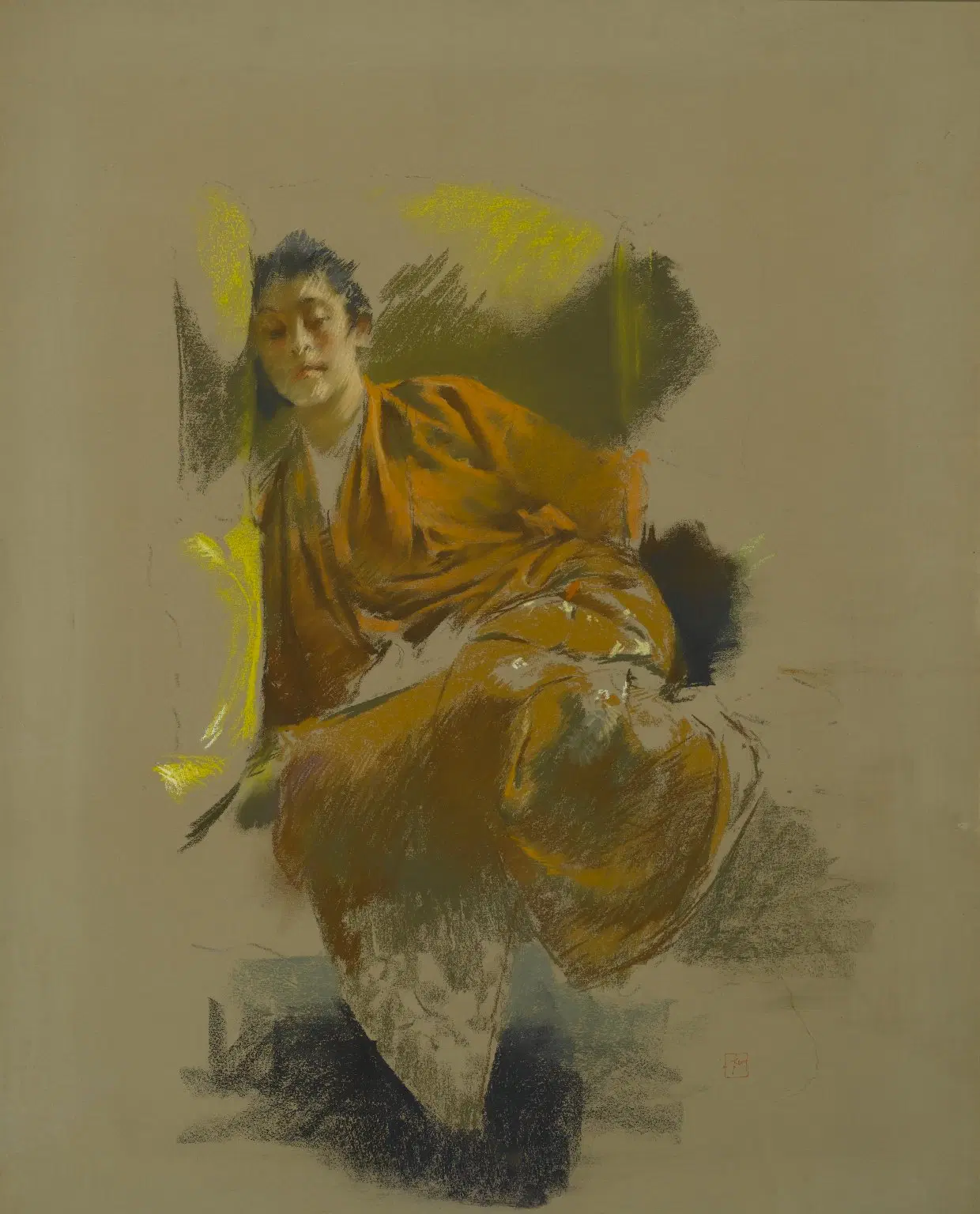American Art
The Brooklyn Museum is home to one of the oldest and most extensive collections of American art in the world. This collection has many strengths, including excellent examples of colonial portraiture, 19th-century neoclassical sculpture inspired by ancient Greek and Roman art, and Hudson River School landscapes. It also boasts significant 19th-century genre paintings, post–Civil War sculpture and figure paintings, and works by New York City–based urban realists (Ashcan School). In addition, the collection contains important representations of early 20th-century realism and American modernism.
Recently, the collection has grown to focus on ever-expansive art historical narratives. Works made by or representing historically underrepresented groups, including non-white and non-Western subjects, allow the Museum to address the complex relationships among race, class, gender, migration, citizenship, national identity, and globalism. Curators remain steadfast in prioritizing the representation of American artists who were previously marginalized based on their identities.
With ongoing support from the Council for African American Art (CAAA), several important gifts and purchases of artworks by 19th- and 20th-century African American artists, including Richmond Barthé, Grafton Tyler Brown, and Charles Ethan Porter, have entered the collection. The department has also acquired works by women artists, such as Florence Kent, Emily Sargent, and Laura Wheeler Waring. A recent Asian American art initiative has exponentially increased the Museum’s artworks by Japanese American artists, such as Chiura Obata and Yasuo Kuniyoshi, and brought in the American Art collection’s first paintings by an Asian American woman, Hisako Hibi.
Highlights
Purview
The American Art collection includes paintings, drawings, prints, and sculptures created by artists who lived in the United States and throughout the Americas from the colonial period to 1960.
Works by American artists from 1960 to the present can be found in the Contemporary Art, Feminist Art, and Photography collections. The Arts of the Americas collection includes works by Indigenous artists. Colonial-era works from Spanish America can also be found in the Arts of the Americas, Decorative Arts and Design, European Art collections. Examples of American design are part of Decorative Arts and Design.
History
“We commend these Exhibitions—and hope the spirit which prompts them will increase and multiply in Brooklyn. We wish some plan could be formed which would result in a perpetual free exhibition of works of art here, which would be open to all classes.” —Walt Whitman on the Brooklyn Institute, November 21, 1846
Inspired by the words of Walt Whitman—the acting librarian in 1835 of the Brooklyn Apprentices’ Library, which preceded the Brooklyn Museum—library founder Augustus Graham bequeathed $10,000 to support the purchase of artworks by living American painters. This was a groundbreaking idea at a time when many American museums focused on collecting historical European paintings.
The library merged with the Brooklyn Institute in 1843 and received Graham’s donation upon his death in 1851. Graham had been eager to promote literacy and culture among the Brooklyn public, and the establishment of a permanent collection of fine art was catalyzed by his vision—“art in service of social improvement.”
The American Art collection was among the first of its kind, driven by an initiative to support living American artists. In 1855, the institute commissioned New York City–based artists Asher B. Durand and Daniel Huntington to create paintings that would start the collection. Landscape painting and historic portraits remain important strongholds in the collection to this day.
Beginning in the late 19th century, rapid changes and innovations in artistic styles led many institutions to consider separating historic and contemporary art. The Brooklyn Museum established a department of Contemporary Art in 1934 that would continue to focus on the work of living artists. The department of American Art continued to collect historic works.
In the 21st century, the American Art department is working to expand the narrative of what it means to be American and redefine the ways in which we represent the cultural history of the United States.
Related exhibitions
Stories and resources
- Story
When Artists Make Multiples, Which One is “Real”?
By: Elizabeth TreptowExplore several artworks in the Brooklyn Museum collection and learn why they look just like other works you may have seen.
- Resource
Collection Highlight: Louisiana Rice Fields

- Story
The Nature Lover’s Guide to the Brooklyn Museum
By: Elizabeth Treptow, Corinne SegalExplore art at the intersection of history and the natural world.
In This Collection Area
Centauress
John La Farge
Dolce Far Niente
John Singer Sargent
Head of an Old Man
Charles Frederic Ulrich
The Flower Seller
Julian Alden Weir
Daphne
William Jacob Baer
Study in Japanese Costume
Robert Frederick Blum
Woman in a Japanese Costume
Robert Frederick Blum
Silver Light, Hudson River
Leon Dabo
La Marcellerie
Gaines Ruger Donoho
Mrs. Robert Lowden
Henry Inman
Laguna with Steamers and Gondolas
Robert Frederick Blum
George Taylor II
Rembrandt Peale







